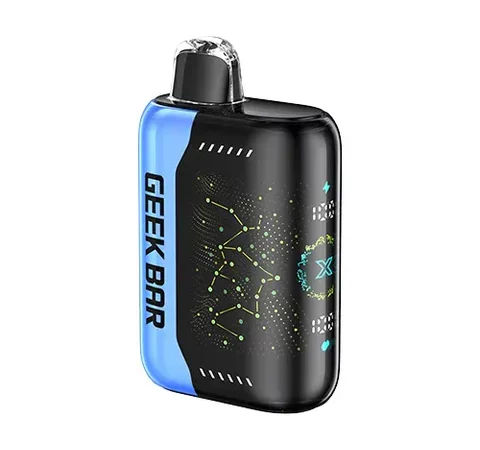In the dynamic digital landscape, social media agency are at the forefront of driving engagement and maximizing return on investment (ROI) for businesses. Crafting effective campaigns that resonate with target audiences requires a strategic approach, leveraging data analytics, creative content, and precise targeting. Here, we delve into the essential components and strategies that ensure social media campaigns yield the highest ROI.
Understanding the Social Media Landscape
The first step in maximizing ROI is to thoroughly understand the social media platforms available. Each platform has its unique user base, engagement style, and content format. A successful social media agency must tailor its approach to fit these nuances.
Key Social Media Platforms and Their Strengths
- Facebook: With its vast user base and sophisticated advertising tools, Facebook is ideal for reaching a broad audience. Its advanced targeting options and diverse ad formats make it a cornerstone for any social media strategy.
- Instagram: Known for its visual-centric content, Instagram is perfect for brands looking to showcase products or services through high-quality images and videos. Its features like Stories and IGTV provide additional avenues for engagement.
- Twitter: Ideal for real-time engagement and customer service, Twitter’s fast-paced environment is perfect for brands that want to stay relevant and engage directly with their audience.
- LinkedIn: As a professional network, LinkedIn is crucial for B2B marketing. It’s the go-to platform for establishing thought leadership and networking with industry professionals.
- TikTok: With its short-form video content, TikTok appeals to a younger demographic. Brands can leverage trends and challenges to create viral content.
Developing a Data-Driven Strategy
A data-driven approach is essential for crafting campaigns that deliver results. By analyzing past performance, audience behavior, and industry trends, social media agencies can create strategies that are both innovative and effective.
Key Metrics to Track
- Engagement Rate: Measures the level of interaction (likes, comments, shares) with the content. High engagement indicates that the content resonates with the audience.
- Conversion Rate: Tracks the percentage of users who take a desired action, such as making a purchase or signing up for a newsletter, after engaging with a social media post.
- Click-Through Rate (CTR): Indicates the effectiveness of a post in driving traffic to a website or landing page.
- Reach and Impressions: Measures how many people see the content and how often it is displayed. High reach and impressions are crucial for brand awareness.
Crafting Compelling Content
Content is king in the realm of social media. To maximize ROI, social media agencies must produce high-quality, engaging content that speaks to the audience’s interests and needs.
Types of Effective Content
- Visual Content: High-quality images and videos are more likely to capture attention and drive engagement. Infographics, behind-the-scenes footage, and product demonstrations are particularly effective.
- User-Generated Content: Encouraging customers to create and share their own content related to the brand builds community and trust.
- Interactive Content: Polls, quizzes, and live videos foster interaction and keep the audience engaged longer.
- Educational Content: Providing value through tutorials, how-tos, and informative articles positions the brand as an authority in its industry.
Leveraging Influencer Partnerships
Influencer marketing is a powerful tool for reaching new audiences and building credibility. Partnering with influencers who align with the brand’s values and target audience can significantly boost campaign effectiveness.
Choosing the Right Influencers
- Relevance: Ensure the influencer’s audience aligns with the brand’s target demographic.
- Engagement: High engagement rates are often more valuable than follower count.
- Authenticity: Authentic endorsements from influencers are more likely to be trusted by their followers.
Implementing Advanced Targeting Techniques
Precise targeting is key to ensuring that social media campaigns reach the right audience. Social media agencies should utilize platform-specific targeting options to refine their audience segments.
Effective Targeting Strategies
- Lookalike Audiences: These are users who resemble an existing customer base, making them more likely to convert.
- Behavioral Targeting: Targets users based on their past behavior, such as website visits or previous purchases.
- Geo-Targeting: Focuses on users within a specific geographic area, ideal for local businesses or events.
Utilizing Paid Advertising
While organic reach is valuable, paid advertising ensures that content reaches a larger and more targeted audience. A balanced mix of both organic and paid strategies is crucial for maximizing ROI.
Types of Paid Social Media Ads
- Sponsored Posts: Promote content to a wider audience beyond the organic reach.
- Carousel Ads: Showcase multiple images or videos in a single ad, ideal for highlighting different features of a product.
- Video Ads: Engage users with dynamic video content.
- Lead Ads: Designed to collect user information directly within the platform, streamlining the conversion process.
Continuous Optimization and A/B Testing
To achieve the best results, continuous optimization and testing are essential. Social media agencies should regularly analyze campaign performance and make data-driven adjustments.
A/B Testing Strategies
- Ad Copy and Creative: Test different headlines, descriptions, and visuals to determine what resonates best with the audience.
- Targeting Options: Experiment with different audience segments to identify the most responsive groups.
- Posting Times: Determine the optimal times for posting to maximize engagement and reach.
Measuring Success and Reporting
Regular reporting is crucial for tracking progress and demonstrating ROI to clients. Detailed reports should include key metrics, insights, and recommendations for future campaigns. Visit 110 digitech
Components of an Effective Report
- Overview of Key Metrics: A summary of engagement, reach, conversions, and other relevant metrics.
- Performance Analysis: Insights into what worked well and what can be improved.
- Recommendations: Actionable suggestions for optimizing future campaigns.
In conclusion, maximizing ROI for social media campaigns requires a strategic, data-driven approach that leverages the strengths of each platform, creates compelling content, and continuously optimizes performance. By following these guidelines, social media agencies can deliver exceptional results for their clients.





Leave a comment
Your email address will not be published. Required fields are marked *